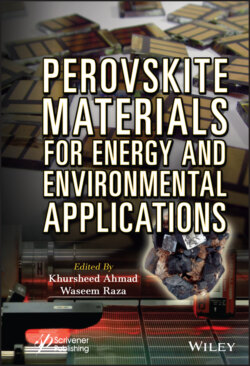Читать книгу Perovskite Materials for Energy and Environmental Applications - Группа авторов - Страница 36
2.1 Introduction
ОглавлениеOur planet’s energy consumption has increased because of rapid industrialization and urbanization. To meet this energy requirement, the use of fossil fuels like coal, natural gas, and oil has increased tremendously. As a result, there is depletion in fossil fuel. Fossil fuels have advantages, like production of enormous energy, easy availability, cost effectiveness, easy transportation, but has several environmental issues. The use of fossil fuel is the main source of local air pollution, escalating carbon emissions, which leads to increase in the greenhouse gases, and their combustion makes the atmosphere more acidic. Moreover, fossil fuel is a nonrenewable source of energy which means in near future, these resources are going to vanish. As per the review of literature, from last six years the oil is left for around fifty years, natural gas for around fifty two years and coal for around one hundred ten years. The solution to this energy crisis is the renewable sources of energy like solar energy, hydrogen energy, wind energy, tidal energy, ocean thermal energy, biogas, biofuels, and geothermal energy.
The flow of research in renewable energy technology has increased tremendously. Out of all the sources of renewable sources of energy, solar energy is the most encouraging and applied approach. Solar energy comes with long-time warranty and low maintenance costs, environment friendly, and easy to adapt. Solar energy can lead us to sustainable development.
Photovoltaic cells are classified into first, second, and third generations as depicted in Figure 2.1. First-generation cells are silicon-based crystalline cells, which are commercially used. Si-based crystalline cells are widely applied cells because of their high stability and high efficiency (nearly 45%). Second-generation cells are thin film–based cells. Third-generation cells are new emerged technology-based cells. Perovskite is the third generation cell. An ideal solar cell should be highly efficient, stable, less costly, simple to fabricate, and environment friendly. None of the existing cells is ideal. Si-based cells have a high cost of production and complex fabrication process. Cadmium tellurium (CdTe) solar cell and copper indium gallium silicon (CIGS) solar cell are second-generation cells that have achieved high efficiency but have some disadvantages. Cadmium tellurium faces the problem of a low abundance of tellurium and toxicity of cadmium, whereas CIGS has the main problem of scarcity of indium in its industrial applications. These limitations lead to the emergence of the third-generation solar cells.
Dye-sensitized solar cell (DSSC) is the first third-generation solar cell and perovskite solar cell (PSC) has evolved from it, as shown in Figure 2.2. The DSSC consists of layers of glass/FTO (fluorine-doped tin oxide)/mesoporous layer of titanium dioxide/light-absorbing dye/electrolyte/FTO/ glass. Despite the impressive research work, DSSC was able to achieve max 13% PCE [2]. The major advantages of DSSC include low fabrication costs and a simple manufacturing process, although disadvantages include the absorption layer should be more than 10 µm to ensure complete light absorption and the phenomenon of light bleaching occurs due to organic dyes [1]. Solid state DSSC (SSDSSC) contains solid hole conductors instead of liquid electrolytes and the thickness is reduced to 2 µm. The hole conductor contains wide bandgap material, such as Spiro-OMeTAD or PEDOT or P3HT. In 2009, Kojima et al. [3] utilized organolead halide as a sensitizer to achieve the power conversion efficiency (PCE) of 3.8%. In 2012, for the first time, an all-solid-state PSC was prepared and achieved a PCE of 9.7% [4]. This showed the potential of PSC toward future cost-effective and high-performance solar cells. A considerable amount of research has been done on PSC in a short time. The highest efficiency achieved was 22.1% in 2016 [5]. For commercialization, stability and toxicity of the PSC should be looked upon.
Figure 2.1 Generations of the photovoltaic cells.
Figure 2.2 Evolution of perovskite solar cell from reduction of size of light absorbing layer from 10 µm (DSSC) to less than 0.5 µm (perovskite solar cell). Reprinted with permission. Copyright {2013} American Chemical Society [1].
